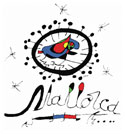History
The Fomento de Turismo de Mallorca (Mallorca Tourist Board) is a private, independent entity which was founded in 1905 by Enrique Alzamora Goma a businessman, journalist and then president of Mallorca’s Chamber of Commerce. The objective of the tourist board was to study and implement how to promote the island to the potential visitors.
The principal activitivies of the organisation, apart from promoting the destination, was to start to improve communications within the island. The first project was the construction of a new road from Andratx to Estellencs.
Official Recognition
In 1907 the organisation was officially recognised by the central Spanish government and give a subsidy of 3,000 pesetas and in 1908 the first tourist guide on Mallorca was published by the Tourist Board.
Getting Started
After a period of inactivity during the First World War, the Tourist Board started to promote the island in earnest and in 1928 the Chamber of Commerce invited the Tourist Board to share its offices in Palma so that it would have an official base. In the 1950’s the Tourist Board took up residence in its own offices in central Palma.
By this time the Tourist Board had the co operation of various organisations, related to tourism, under its umbrella including: customs agents; shipping agents; hoteliers and transport companies. The first holiday packages were developed, brochures were printed, posters were designed, maps and guides were published, and a regular excursion service was provided to visitors, wishing to explore the island’s interior and its main monuments.
Two main characters played a major part in the promotion of the island’s tourism industry at that time. They were the Austrian painter, Erwin Hubert and the Argentinian painter and poet Adam Diehl, who also built the famous Hotel Fomentor in 1929.
Mallorca – Leading Tourism Destination
In 1931 Mallorca is officially recognised as a leading tourist destination by the world tourism industry. The Fomento develops the first advertising “tag line” ; “Ideal Climate”. A permament representative from Mallorca is based in Paris during the winter to promote the island for the following summer.
Three new luxury hotels are built in Palma; The Victoria, Mediterráneo and Royal. At this time the appearance of a British “colony” in the Terreno area emerged along with a British Club and English School.
Spanish Civil War & World War II
From 1936 to 1945 the Spanish Civil War and the Second World War basically stopped any activity: No tourists to the island meant that the majority of hotels had to close. However, the Tourist Board was determined to keep at least one hotel, which was the Hotel Victoria (owned by the Melia Sol Group), during this difficult period.
UN Lift Sanctions On Spain
1950 marked an important year not only for the Mallorca Tourist Board, but also for the rest of Spain as the United Nations lifted its sanctions on Spain. That year Mallorca received 100,000 tourists. In 1951 this figure doubled to 200,000. A new “Honeymoon in Mallorca” campaign was launched and official courses were provided for interpreters and guides.
In 1959 the Spanish Government took steps to assist the tourism industry by simplfying the procedure for passport visas and customs control. By now other European countries were beginning to recuperate from the affects of the Second World War. Social and economic expansion meant more leisure time and better paid holidays. The Balearic Islands were much cheaper than the rest of Europe and this became a major factor in the 1960’s boom.
The Booming 60’s
Throughout the 1960’s Mallorca witnessed the tourism boom which co-incided with the development of commercial air travel. In 1960 the current Son Sant Joan Palma Airport was opened when, for the first time, the total of visitors arriving by air surpassed those arriving by sea. Prior to this, passengers arrived at the Son Bonet Aerodrome, which is still used for private aircraft today.
The airport quickly became one of the most important in Europe with a spectacular growth in passengers. In 1960 the airport recorded 636.764 passengers movements. In 1962 they recorded a million passenger movements, 4 million in 1969 and 7 million in 1973. By this time the number of tourists had increased from 360,000 to 2,850,000 with accommodation capacity of 65,000 hotel beds.
The dramatic increase in hotels and beds available also brought the explosion of offers and special prices, and passengers arriving by air increased to seven million during this period representing 89% of the total visitors to the island.
Recession – Provokes New Policy for the Future
In 1974 the energy crisis, economic recession and record unemployment figures (particularly in the UK and Germany) had a drastic affect on Mallorca’s tourism industry and resulted in the worst year for tourism since the Spanish Civil War.
Up until this point, its’ tourism industry was growing at a rapid rate without much thought to the future. However, the recession provoked the island’s tourism industry to look to itself, and to study how it could improve its product. It was now clear that the island needed a co-ordinated tourism policy and to protect its’ environment.
First ABTA Congress
In 1973 Mallorca hosted the first ABTA (Association of British Travel Agents) and welcomed 2,800 agents to the island. To mark this occasion, the celebrated artist, Joan Miro, gave the Mallorca Tourist Board a painting called “Sol de Mallorca” (Mallorcan sun). This painting was used as the official logo of the Tourist Board and continues to appear on all its publicity material.
The congress was enormously successful and key in the development of its business with the British market. ABTA have continued to celebrate its convention on Mallorca every 10 years.
Musical Mallorca
From 1975 – 1978, the Tourist Board launched “Musical Mallorca”. This an important annual musical festival combined national and international music and brought the international stars of the time including; Tom Jones; Gilbert Becaud; Charles Aznavour and Denis Rousos. This event, more than any other, firmly put Mallorca on the map in the international arena.
The Fomento Enters A New Phase
In 1988 the Tourism Institute of the Balearics (IBATUR) was formed as a marketing organisation to promote the Balearic Islands. The Mallorca Tourist Board therefore entered a new phase to promote the island’s interior, its culture and history. Projects include the restoration of windmills, Musical Mallorca, Winter in Mallorca, the creation of a Press Centre and an Image Bank for journalists.
The key role of the Tourist Board today is best described as a forum where everyone in tourism on the island can come and debate important issues, policies, and decide on future tourism strategy.
It is therefore considered to be the first ever tourist board in Europe. The objective then was to create awareness of Mallorca as a destination. Now, over a 100 years later, Mallorca ranks as one of the favourite holiday destinations of the British.
In 2011, as a direct result of the continuing economic crisis Europe, all public and local funding from the main local organisations and departments dried up. From this time The Fomento has had to be financed almost exclusively from members’ quotas.
Our responsibility, as representatives of the island’s tourism sector which is the driving force and underpins Mallorca’s economy, continues to be one of representing the whole sector, acting as a lobby and ensuring that all institutions play their part to benefit and maintain the infrastructure and positive image of our island within the main feeder markets.
In spite of the difficult economic times we face, Mallorca remains a leader in tourism development as it continues to announce new initiatives, new investment, new hotels and new attractions which will ensure the health and continued success of Mallorca’s Tourism Industry for the future.
 English
English  Español
Español  Deutsch
Deutsch 

